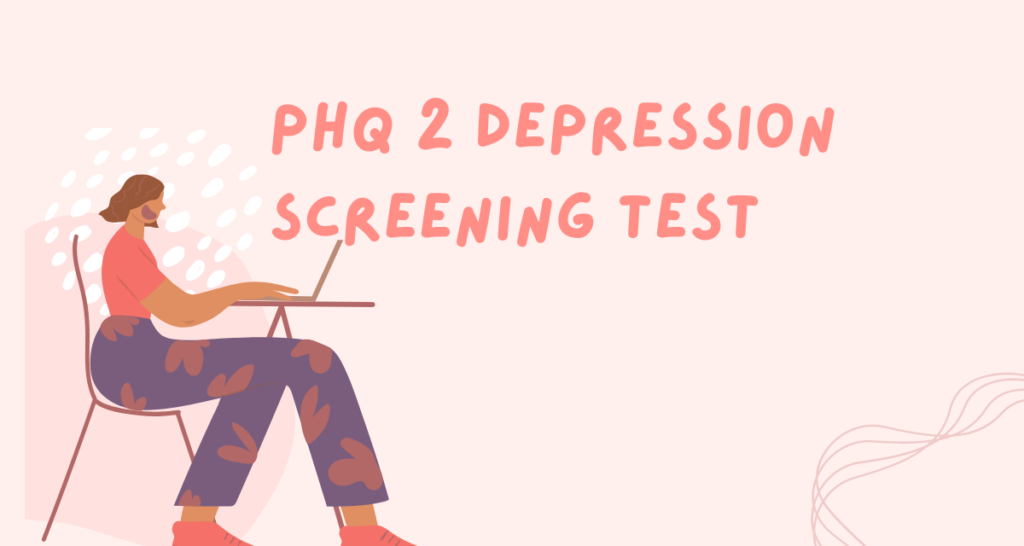Are you feeling down lately? Are you having trouble sleeping or eating? You may be suffering from depression. Depression is a serious mental illness that affects millions of people each year. If you think you may be depressed, it is important to get screened as soon as possible. The PHQ2 depression screening test is an easy way to determine if you are suffering from this condition. In this blog post, we will discuss how to ace the PHQ-2 test and get the help that you need!
Contents
What Is PHQ2?
 The Patient Health Questionnaire (PHQ) is a self-administered depression screener written by Dr. Robert L. Spitzer, Professor of Psychiatry at Columbia University. The PHQ-2 is the first two questions of the original nine-question PHQ and takes only seconds to complete. It is often used in doctor’s offices as a quick way to screen patients for depression.
The Patient Health Questionnaire (PHQ) is a self-administered depression screener written by Dr. Robert L. Spitzer, Professor of Psychiatry at Columbia University. The PHQ-2 is the first two questions of the original nine-question PHQ and takes only seconds to complete. It is often used in doctor’s offices as a quick way to screen patients for depression.
Many people are not aware that depression is a medical condition that can be treated. If you or someone you know is experiencing symptoms of depression, it is important to seek professional help. The PHQ-2 can be a helpful tool in identifying those who may need further evaluation by a mental health professional.
How Does the PHQ-2 Work?
The PHQ-2 asks patients to rate how often they have experienced specific symptoms over the past two weeks. The first question assesses symptoms of depressed mood, and the second assesses anhedonia (or loss of pleasure). Then, the clinician can ask follow-up questions about any endorsed symptoms to arrive at a diagnosis.
The PHQ-2 has been found to be an accurate screening tool for depression, with a sensitivity of 88% and a specificity of 82%.1 That means that if you screen positive on the PHQ-2, there’s an 88% chance that you actually have depression.
If you’re concerned about your PHQ-2 score, the best thing to do is to talk to a mental health professional. They can administer a more comprehensive assessment to determine whether you have depression or another mental health condition.
What Questions Are Asked In PHQ-2?
Many people with depression do not realize they have the condition. The PHQ-2 is a self-administered screening test that can help identify people who may have depression. It is not intended to diagnose depression, but rather to flag possible cases for further evaluation by a mental health professional.
The PHQ-2 consists of two questions that ask about the frequency of certain depressive symptoms over the past two weeks. The first question asks about the frequency of depressed mood, and the second question asks about the frequency of anhedonia (loss of interest or pleasure in activities).
A “yes” answer to either question indicates the presence of symptoms. The more “yes” answers, the greater the severity of the symptoms.
How Is the PHQ-2 Scored?
 The PHQ-2 is scored by counting the number of “yes” answers to each question. A score of 0-1 is considered “normal,” 2-3 is considered “mild depression,” 4-5 is considered “moderate depression,” and 6 or more is considered “severe depression.”
The PHQ-2 is scored by counting the number of “yes” answers to each question. A score of 0-1 is considered “normal,” 2-3 is considered “mild depression,” 4-5 is considered “moderate depression,” and 6 or more is considered “severe depression.”
This score can be useful in determining whether or not a person is at risk for depression and may need to seek professional help. Each person’s situation is unique, so it is important to discuss any concerns with a mental health professional.
Therefore, with proper guidance, the PHQ-2 can be a helpful tool in assessing one’s risk for depression. And further action can be taken if necessary.
What Are Some Other Diagnostic Criteria?
If PHQ2 is positive, it is important to explore other diagnostic criteria for depression. The PHQ2 is not a definitive test for diagnosing major depression. However, it can be a valuable screening tool, especially when used in conjunction with other measures.
There are also some alternatives to the PHQ2 that may be used to screen for depression. These include:
- The Beck Depression Inventory (BDI) is another well-known and widely-used tool. The BDI has been found to be highly sensitive to changes in depressive symptoms over time, making it a good option for tracking the course of major depression.
- The Hamilton Depression Rating Scale (HDRS) is another option, though it is not as widely used as the BDI or PHQ2. HDRS has been found to be a reliable measure of depression severity.
- The Zung Self-Rating Depression Scale (SDS) is another possibility. The SDS has been found to be a reliable tool for screening for depression.
- The Patient Health Questionnaire-9 (PHQ-9) is another option that includes questions about depressive symptoms, as well as other symptoms of physical and mental health. The PHQ-9 has been found to be a reliable measure of depression severity.
As you can see, there are a number of different options available for screening for depression. If you think you may be depressed, it is important to talk to your doctor about which option is best for you. More often than not, a combination of different measures will be used to make a diagnosis.
How To Treat If You’re Diagnosed With Depression?
If you are diagnosed with depression, there are a number of treatment options available. Treatment typically involves a combination of medication and therapy.
- Medication: Antidepressants are the most common type of medication used to treat depression. They can be taken on a short-term or long-term basis, depending on the severity of your symptoms.
- Therapy: Cognitive behavioral therapy (CBT) is the most common type of therapy used to treat depression. It focuses on identifying and changing negative thought patterns and behaviors that are contributing to your depression.
- Electroconvulsive therapy (ECT): It is a treatment option that may be recommended for severe cases of depression that have not responded to other treatments. It involves passing electrical currents through the brain to induce a seizure. This seizure is thought to help improve mood by changing the way the brain functions.
- Support groups: This is a type of therapy that involves meeting with other people who are also struggling with depression. This can be an effective way to share your experiences and learn from others who understand what you’re going through.
- Self-care: Taking care of yourself is an important part of managing depression. This includes getting regular exercise, eating a healthy diet, getting enough sleep, and taking breaks when you need them.
Depression is a serious condition that requires treatment. If you think you may be depressed, talk to your doctor about the best treatment options for you. These things can help, but the most important thing is to get started on treatment as soon as possible. With the right treatment, you can start to feel better and get your life back on track.
Conclusion
In conclusion, PHQ2 is an important screening tool for depression. By Familiarizing yourself with the test, and knowing how to answer the questions, you can ensure that you get the most accurate results possible. This test can be a valuable asset in diagnosing and treating, depression.
Therefore, it is important to consult with a professional if you have any concerns about your mental health. If you think you may be depressed, don’t hesitate to reach out for help.
For more information and guidance, do not forget to speak with a healthcare professional at Therapy Mantra. The earlier you seek help, the better it is for you. Contact us today to learn more about our services. You can also book our online depression counseling session or download our free Android or iOS app.


